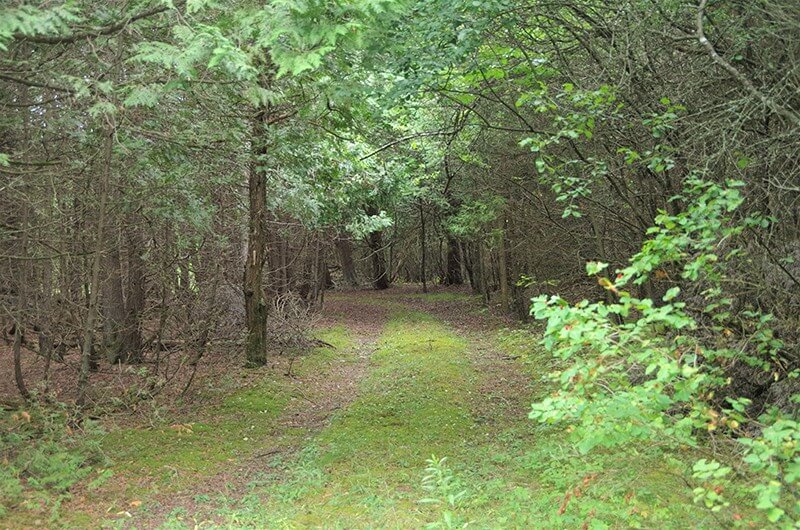A new trail on the other side of the lake is as old as time

A trip to Essex, N.Y. on the ferry from Charlotte involves traditions: lunch at the Old Dock, a walk for an ice cream down the street, cocktails at the Essex Inn, and a stroll to the playground. Charlotter Terry Dinnan hopes that another tradition will begin for Charlotte families and the many others who pass through the small town on the other side of the lake: a walk through The Essex Quarry Nature Park.
Dinnan, along with his business partner Al Ulmer, owned and operated a 35-acre limestone quarry in Essex for more than 25 years. They recently sold the land to Champlain Area Trails (CAT), a nonprofit based in New York that, according to its web site, “creates and maintains hiking and cross-country ski trails in the Champlain Valley that link communities, connect people with nature, and promote economic vitality.”
Dinnen donated his half of the profits from the quarry’s sale back to CATS to help establish The Essex Quarry Nature Park. The organization plans to develop two miles of hiking and cross-country skiing trails and hopes to have the project completed for the town’s annual Essex Days celebration in August of 2020.
The property is accessible to ferry riders; it is situated on Lake Road in Essex, partially within the village itself, and within walking distance of the ferry landing. Dinnan has enjoyed access to properties that others have opened to the public and imagined that future for this quiet, mostly wooded area. He said that thought it was work that brought him there, he “felt blessed to spend that time in such a lovely spot.”
Dinnen said one unique feature of the park, which will be highlighted with explanatory signs along the trails, is the 400 million-year-old fossils—once part of the world’s oldest coral reef.
The property is on the site of the former Essex Quarry that operated from the late 18th century to just a few years ago. Stone carved from the quarry walls was used in many of the buildings in Essex and was shipped south by lake and river barge, where it was used in the construction of the State House in Albany and the Brooklyn Bridge.
Today, the site showcases a combination of natural, geological, paleontological and historic features. These include fossils from an oceanic reef that dates back to a time when New York and Vermont were actually on separate continents thousands of miles apart.
The eastern part of the property features a rare natural community that was identified by Steve Young, an ecologist with NY State’s Natural Heritage Program as a “Limestone Woodland.” It occurs on shallow soil above limestone bedrock and, while it occurs extensively along Lake Champlain, it is rare on the planet and in the rest of New York.
Dinnan said he hopes to make the Charlotte connection stronger in years to come, with an eventual connection to the Charlotte Town Trail. “The son of the CATS director (a UVM student) did meet briefly with Marty Illick and a Charlotte trails committee person,” he said. “This meeting was very general and didn’t get into specifics, but the idea of coordinating various public trail efforts might make sense at some point. It’s very preliminary now, but the potential is exciting as the Lake Champlain area is such a beautiful resource.”
CATS is raising money for the trails through donations and grants. For more information, contact the CATS office at (518) 962-2287 or by email.

